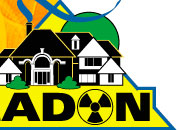 |
 |
 |
|||||||||||||||
|
|||||||||||||||||
| Call: 417-844-0942 | |||||||||||||||||
|
Responding to Radiation Emergencies Overview We use radioactive materials for medical diagnoses and treatments, defense activities, electric power generation, and industrial processes. There are some risks, however, when using radioactive materials for these activities .Careful planning and design help minimize these risks, but even the best preparation is not enough to prevent accidents completely. In addition to preparing for accidents, we must also be prepared to respond to an act of terrorism involving radioactive material. When an emergency happens, such as the 1979 accident at Three Mile Island in Pennsylvania, qualified individuals need to respond quickly to minimize the consequences of the incident. In these situations, the public should listen to the emergency responders to avoid unnecessary radiation exposure. Their primary concern is the health and safety of the public. Remember Listen to the advice of local officials and emergency responders. Their primary concern is your health and safety. From the location to the type of radiation, every emergency response is going to be different. Apart from individuals in the immediate vicinity of the emergency, the most significant concern will be inhalation of radioactive material carried by winds. Emergency response teams use their expertise and state-of-the-art technology to assess each situation accurately and act quickly to limit potential hazards. Who is protecting you A large number of organizations could be involved in responding to a nuclear or radiological emergency. On the Federal level, the role of each of the agencies and organizations is defined in the National Response Plan’s Nuclear/Radiological Incident Annex. Some of the more prominent agencies with responsibilities under the Nuc/Rad Annex are: U.S. Department of Homeland Security(DHS) In the event of a terrorist attack, natural disaster or other large-scale emergency, the Department of Homeland Security has primary responsibility for ensuring that emergency response professionals are prepared. DHS coordinates the comprehensive federal response to any large-scale crisis and mounts a swift recovery effort. Additionally, DHS educates citizens to prepare themselves, their families and their homes for major emergencies. U.S. Environmental Protection Agency(EPA) In coordination with DHS, EPA plans for and responds to radiological emergencies. EPA works with other federal agencies and state responders to contain, monitor, and control radiological conditions. As part of this effort, EPA developed Protective Action Guides (PAGs) to help state and local authorities make the best radiation protection decisions during emergencies. U.S. Department of Energy(DOE) The Office of Emergency Operations administers the DOE and the National Nuclear Security Administration’s (NNSA) response to emergencies at DOE and NNSA facilities and field sites. DOE also provides technical experts who help evaluate the threat posed by a nuclear or radiological emergency within the United States and abroad. U.S. Nuclear Regulatory Commission(NRC) NRC is responsible for ensuring that each nuclear power plant in the United States has a plan for responding to emergencies at the plant. State and Local Responders The PAGs developed by EPA place the primary responsibility for initial emergency protective actions upon the state and local governments. When an emergency occurs, first responders use these PAGs to choose a response action (e.g., evacuating a town that may be affected by the radiation). What you can do to protect yourself Be Informed Inform yourself of protective actions before a radiation emergency ever occurs. If an incident occurs, listen to the advice of your local government officials and emergency responders. Then take the recommended actions. Their primary concern is for your health and safety. Three basic ways to protect yourself against unnecessary exposure are: • Time: Limit the time you spend around the radiation source, your exposure — and the chance of damage to your body — will be much lower. • Distance: Increase your distance from the source, your exposure — and the chance of damage to your body — will be much lower. • Shielding: Increasing the shielding between yourself and a radiation source (with protective barriers such as walls and buildings) will decrease your exposure. Depending on the type of radioactivity (alpha particles, beta particles, or gamma rays), effective shielding could be as thin as a piece of paper (for alpha radiation) or as thick as a lead-lined wall (for gamma radiation). Resources
|
|
||||||||||||||||